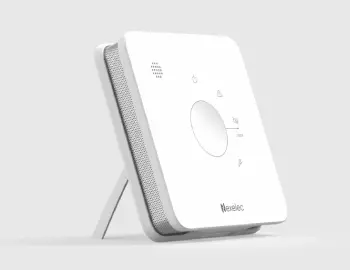Carbon monoxide is often referred to as the ‘silent killer’. This is because it is odourless, colourless, and tasteless, making it impossible for humans to detect without specialised equipment. This toxic gas poses a serious threat to many properties, particularly in spaces with fuel-burning appliances. It is essential for the health and safety of your building’s occupants to understand the dangers of carbon monoxide, and to implement measures to protect your building in the event of a leak.
Carbon monoxide is a by-product of incomplete combustion, which occurs when fuels such as gas, wood, coal, or oil do not burn completely. Some common sources include boilers, fireplaces, gas stoves, and vehicle exhaust from attached garages. Leaks tend to happen due to inadequate ventilation or appliances that do not function properly; CO can accumulate in enclosed spaces and pose severe health risks.
It inhibits the blood’s ability to transport oxygen through the body, which can result in symptoms ranging from mild to life-threatening: nausea and fatigue, rapid heart rate, dizziness, visual impairment, brain damage, heart and lung failure, or death. Because CO cannot be detected by our own senses, individuals often go unaware of exposure until symptoms appear, which can lead to delayed responses in emergencies. In short, it’s best not to take the risk.
In the UK, it is a legal requirement to install carbon monoxide alarms in any room used as living accommodation that contains a fixed combustion appliance, excluding gas cookers. To ensure full protection, carbon monoxide detectors should be installed on every level of a building, near fuel-burning appliances (but at a safe distance to prevent false alarms), in any bedrooms just inside or outside sleeping areas, and near attached garages.
The Nexelec AIR carbon monoxide sensor detects CO and optimises the energy management of buildings. Integrating an Internet of Things (IoT) radio communication module for consistent monitoring, no internet is required from this smart carbon monoxide detector. Maintenance is much easier also, and CO alarms can be relayed to the application or a remote monitoring centre. Its use of powerful technology gives the sensor a long lifespan of 10 years, enabling not only the detection of carbon monoxide, but of temperature and humidity also.
A common question people have is whether a boiler can produce carbon monoxide when switched off – the answer to which is no, it can’t. When a boiler is turned off at the mains, it does not burn fuel, so no CO is generated. However, faulty or poorly maintained boilers can produce CO while in operation, so it is important to undertake regular servicing. That said, most boilers are consistently on at the mains, requiring only to be switched on by a timer in many cases.
If your CO sensor activates, an alarm will sound and, in this instance, you should leave the property immediately, ensuring all occupants vacate the premises to a safe outdoor location, and then call 999 to request an ambulance if someone shows signs of CO poisoning, or has collapsed. You should seek professional assistance and arrange for a qualified engineer to inspect and repair any faulty appliances.
To safeguard your building and its occupants from carbon monoxide, you should make sure to install reliable CO detectors, with alarms placed according to regulations and in strategic positions throughout the property; have all fuel-burning appliances and ventilation systems inspected annually by certified professionals; educate all regular occupants so everyone understands the dangers of carbon monoxide and knows how to respond to an alarm; and use interconnected systems that provide comprehensive coverage for integrated alarms.
Carbon monoxide is a silent but deadly threat that demands proactive measures. By taking precautions to mitigate and detect leaks, you can significantly reduce the risk of exposure. Protecting your building and all who dwell within from this invisible killer is not simply a legal obligation, but a moral responsibility that could very well save lives.











